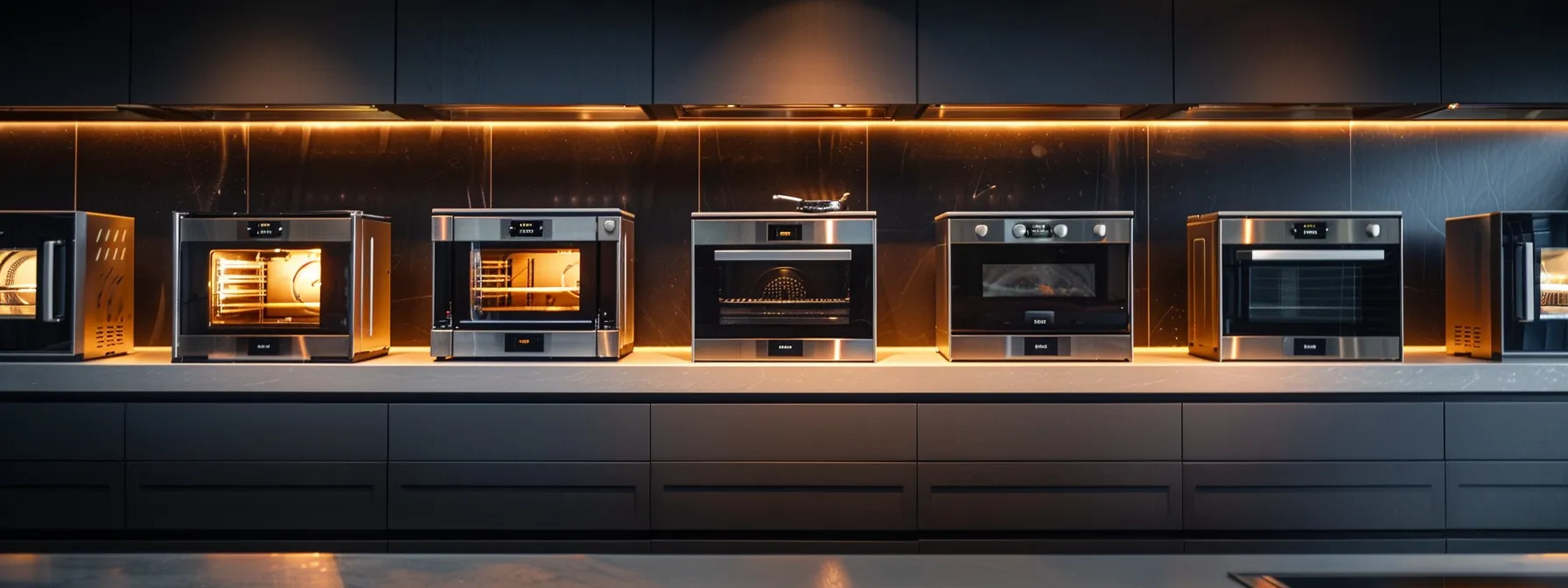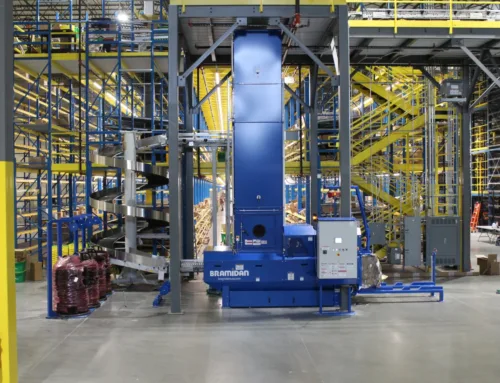
Choosing the right convection oven can significantly impact your bakery’s efficiency and product quality. With options ranging from natural gas to propane models, understanding the essential features like airflow and touchscreen controls is crucial. This article will guide you through evaluating various types of convection ovens, their capacity, and energy efficiency, helping you make an informed decision. By addressing common pain points, such as high operating costs and maintenance challenges, you’ll gain insights that can enhance your bakery’s performance and longevity.
Understanding the Role of Convection Ovens in Baking

Convection ovens play a crucial role in baking, significantly enhancing productivity and the quality of pastries. By utilizing advanced thermostat technology, these ovens ensure even heat distribution, resulting in consistent baking results. In this section, I will explore how convection technology improves baking outcomes and discuss the advantages of using convection ovens, including their vitreous enamel interiors that facilitate easy cleaning and maintenance. For more information on Refrigeration Parts or Deli Equipment, visit our About Us page or Contact Us at End2End Logix.
Learn How Convection Technology Enhances Baking Results
Convection technology significantly enhances baking results by promoting even heat distribution throughout the oven. This ensures that pastries and baked goods rise uniformly, reducing the risk of undercooked centers or burnt edges. In my experience, using a countertop convection oven with a reliable ignition system not only saves energy but also allows for precise temperature control, which is essential for achieving the perfect bake every time. The porcelain interiors of these ovens make cleaning straightforward, allowing me to focus more on baking and less on maintenance.
Discover the Advantages of Using Convection Ovens in Bakeries
Using convection ovens in bakeries offers several advantages that can significantly impact foodservice operations. The even heat distribution ensures that baked goods achieve consistent results, which is essential for maintaining quality and customer satisfaction. Additionally, the construction of these ovens often includes features like vitreous enamel interiors that promote sanitation and make cleaning easier, allowing me to focus on baking rather than maintenance. When selecting a convection oven, I also consider the warranty options available, as a solid warranty can provide peace of mind and protect my investment in high-performance equipment.
Convection ovens are powerful tools that can transform your baking. Now, let’s explore the key features that will help you choose the right one for your kitchen.
Identifying Essential Features for Your Convection Oven

When selecting a convection oven, I focus on several essential features to ensure it meets my baking needs. First, determining the ideal oven size is crucial for accommodating various dishes, including sheet pans and meat. Next, I prioritize the right temperature controls and settings for precise baking. Lastly, I look for ovens with efficient air circulation systems to enhance energy efficiency and performance, especially those that are Energy Star certified.
Determine the Ideal Oven Size for Your Baking Needs
Determining the ideal oven size for your baking needs is essential for maximizing efficiency in your bakery. I recommend assessing the volume of baked goods you typically produce, as this will guide you in selecting a convection oven that can accommodate your requirements without compromising on quality. For instance, if you often bake large batches of pastries, a turbofan convection oven with a larger capacity will ensure even heat distribution and consistent results, allowing you to meet customer demand effectively.
- Assess your typical baking volume.
- Choose a convection oven that fits your production needs.
- Consider a turbofan model for enhanced efficiency.
Choose the Right Temperature Controls and Settings
Choosing the right temperature controls and settings for your convection oven is vital for achieving optimal baking results. I recommend looking for models that offer precise temperature adjustments, as this allows for better control over the cooking process. Additionally, consider ovens with multiple heating element options, which can enhance versatility and ensure that your baked goods are cooked evenly, whether you’re using a stove or a convection oven.
- Prioritize precise temperature adjustments for better control.
- Look for multiple heating element options for versatility.
- Ensure even cooking for all baked goods.
Select Ovens With Efficient Air Circulation Systems
Selecting ovens with efficient air circulation systems is essential for achieving optimal baking results in any bakery. I have found that models featuring powerful fans and well-designed airflow channels ensure that heat is evenly distributed, which is crucial for consistent baking. When investing in Bakery Equipment, I recommend looking for convection ovens made from durable stainless steel, as they not only enhance performance but also provide longevity and ease of maintenance. If you have questions about the best options for your needs, feel free to Contact Us for expert guidance.
- Look for powerful fans for even heat distribution.
- Choose stainless steel models for durability.
- Ensure efficient airflow channels for consistent baking.
Now that we’ve pinpointed the key features to look for, it’s time to see what options are out there. Let’s compare the different types of convection ovens available and find the right fit for your kitchen.
Comparing Various Types of Convection Ovens Available

When selecting a convection oven, I find it essential to compare the various types available. I will explore the differences between gas and electric convection ovens, assessing their unique benefits. Additionally, I will discuss the advantages of countertop versus floor models and highlight the features of digital and manual controls. Understanding these aspects will help you make an informed decision for your bakery needs.
Explore Differences Between Gas and Electric Convection Ovens
When comparing gas and electric convection ovens, I find that each type has distinct advantages that cater to different baking needs. Gas convection ovens typically heat up faster and provide a more responsive temperature control, which is beneficial for baking dough that requires precise conditions. On the other hand, electric convection ovens often offer more consistent heat distribution, making them ideal for chefs who prioritize uniform baking results, especially in a busy food truck environment where efficiency is key. Understanding these differences can help you choose the right oven for your bakery or food service operation:
- Gas ovens heat up quickly and offer responsive temperature control.
- Electric ovens provide consistent heat distribution for uniform results.
- Consider your specific baking needs when choosing between gas and electric.
Assess the Benefits of Countertop Versus Floor Models
When deciding between countertop and floor convection ovens, I consider the specific needs of my bakery. Countertop models are ideal for smaller spaces and can efficiently handle tasks like baking biscuits, thanks to their compact design and effective heat transfer. In contrast, floor models typically offer larger capacities and more robust exhaust systems, making them suitable for high-volume baking operations where consistent results are essential. Understanding these differences helps me choose the right oven that aligns with my production demands and available space.
Understand the Features of Digital and Manual Controls
When evaluating convection ovens, I pay close attention to the features of digital and manual controls, as they significantly impact temperature control and overall baking performance. Digital controls often provide precise temperature settings, which are essential for maintaining food safety and achieving consistent results, especially when baking delicate items on a deck or griddle. In contrast, manual controls can offer a more hands-on approach, allowing me to adjust settings quickly based on my experience and intuition, but I ensure that the materials used are resistant to corrosion to maintain the oven‘s longevity and reliability.
Choosing the right convection oven is just the beginning. Next, we must consider how its size and capacity will meet the demands of your bakery’s production.
Evaluating Capacity and Size for Your Bakery’s Production

Calculating the oven capacity needed for my recipes is essential to ensure I meet production demands without risking inefficiency. I also consider space limitations within my bakery layout to optimize workflow. Additionally, planning for future growth and increased baking demand helps me avoid potential combustion issues and ensures my chiller can accommodate future needs. Each of these factors plays a critical role in selecting the right convection oven.
Calculate the Oven Capacity Needed for Your Recipes
Calculating the oven capacity needed for my recipes is a critical step in ensuring that I can meet production demands efficiently. I assess the volume of each batch I typically bake, considering the size of my pans and the types of baked goods I produce. For instance, if I regularly bake large trays of cookies or multiple loaves of bread, I opt for a convection oven with a larger capacity to avoid overcrowding, which can lead to uneven baking and compromised quality.
Consider Space Limitations Within Your Bakery Layout
When considering the space limitations within my bakery layout, I prioritize efficient use of available square footage. It’s essential to measure the area where the convection oven will be placed, ensuring there is adequate room for ventilation and access for maintenance. I often recommend creating a layout that allows for smooth workflow, as this can significantly enhance productivity and reduce the risk of accidents in a busy kitchen environment:
- Measure the designated area for the convection oven.
- Ensure proper ventilation and access for maintenance.
- Design a layout that promotes efficient workflow.
Plan for Future Growth and Increased Baking Demand
Planning for future growth and increased baking demand is essential when selecting a convection oven. I always consider potential changes in my production volume, as a growing bakery may require additional capacity to meet customer needs. By investing in a convection oven with a larger capacity now, I can avoid the hassle of needing to upgrade later, ensuring that I can efficiently handle increased orders without compromising on quality or consistency.
With the right capacity in place, the next step is to consider how efficiently your bakery runs. Understanding energy use and operating costs can reveal hidden savings and improve your bottom line.
Analyzing Energy Efficiency and Operating Costs

When selecting a convection oven, I focus on energy efficiency and operating costs to ensure long-term savings. I examine energy ratings of different oven models to identify the most efficient options. Additionally, I estimate operating costs and potential savings, while opting for ovens with energy-saving features that can significantly reduce my utility bills over time.
Examine Energy Ratings of Different Oven Models
When examining energy ratings of different convection oven models, I prioritize those with high efficiency ratings, as they can lead to significant savings on utility bills over time. For instance, ovens that are Energy Star certified not only consume less energy but also often come with features designed to optimize performance, such as improved insulation and advanced heating elements. By investing in an energy-efficient convection oven, I can enhance my bakery’s productivity while minimizing operating costs, ultimately benefiting my bottom line.
Estimate Operating Costs and Potential Savings
Estimating operating costs and potential savings is a critical step in selecting a convection oven for my bakery. I analyze the energy consumption of different models, focusing on those with high efficiency ratings, as they can significantly lower my utility bills over time. For example, by choosing an Energy Star certified convection oven, I not only enhance my baking efficiency but also reduce long-term operating costs, allowing me to allocate resources more effectively within my business.
Opt for Ovens With Energy-Saving Features
When selecting a convection oven, I always prioritize models with energy-saving features, as they can significantly reduce my operating costs. For instance, ovens equipped with advanced insulation and efficient heating elements not only consume less energy but also maintain consistent temperatures, which is crucial for achieving quality baking results. By investing in energy-efficient convection ovens, I can enhance my bakery’s productivity while lowering utility bills, ultimately benefiting my bottom line and allowing me to allocate resources more effectively.
Energy efficiency is just the beginning. To truly benefit from your convection oven, you must know how to care for it and keep it running strong.
Maintaining and Extending the Life of Your Convection Oven

Implementing regular cleaning and maintenance routines is essential for extending the life of your convection oven. I always follow manufacturer guidelines to ensure optimal performance and reliability. Additionally, scheduling professional servicing helps prevent unexpected downtime, keeping my bakery running smoothly. In the following sections, I will detail these practices to help you maintain your convection oven effectively.
Implement Regular Cleaning and Maintenance Routines
Implementing regular cleaning and maintenance routines for my convection oven is essential to ensure its longevity and optimal performance. I make it a point to clean the oven interior and exterior after each use, focusing on removing any food residues that could affect heat distribution. Additionally, I schedule professional servicing at least once a year to check for any potential issues, which helps prevent unexpected breakdowns and keeps my bakery running smoothly.
Follow Manufacturer Guidelines for Optimal Performance
Following manufacturer guidelines is essential for maintaining optimal performance in my convection oven. These guidelines provide specific instructions on cleaning, usage, and maintenance that can significantly extend the life of the equipment. For instance, I always refer to the manual for recommended cleaning agents and techniques, ensuring that I do not inadvertently damage the oven‘s interior or components.
- Refer to the manual for cleaning instructions.
- Adhere to usage guidelines for best results.
- Schedule regular maintenance as recommended.
Schedule Professional Servicing to Prevent Downtime
Scheduling professional servicing for my convection oven is a proactive step I take to prevent unexpected downtime in my bakery. Regular maintenance checks by qualified technicians help identify potential issues before they escalate, ensuring that my equipment operates at peak performance. By investing in professional servicing, I not only extend the life of my convection oven but also maintain the quality of my baked goods, which is essential for customer satisfaction and business success.
Conclusion
Choosing the right convection oven is crucial for any bakery aiming to enhance productivity and maintain high-quality baked goods. By understanding the essential features, such as size, temperature controls, and energy efficiency, you can make informed decisions that align with your specific baking needs. Regular maintenance and adherence to manufacturer guidelines will extend the life of your equipment, ensuring consistent performance. Investing wisely in a convection oven not only improves your baking outcomes but also supports the overall success of your foodservice operation.
Share This Story, Choose Your Platform!
Get In Touch
Phone: (847) 722-6942
Email: sales@end2endlogix.com
Web: end2endlogix.com


